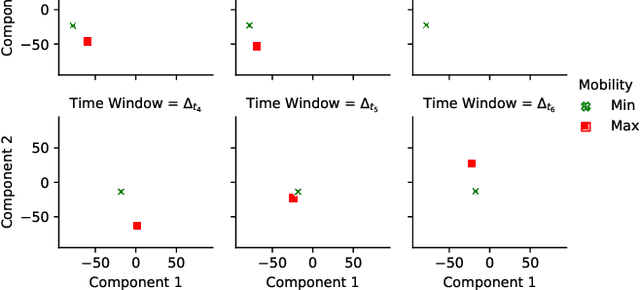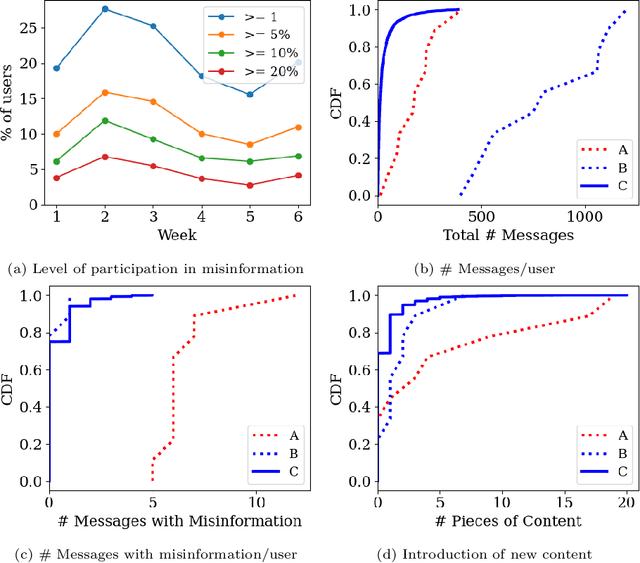Carlos H. G. Ferreira
Understanding mobility in networks: A node embedding approach
Nov 11, 2021



Abstract:Motivated by the growing number of mobile devices capable of connecting and exchanging messages, we propose a methodology aiming to model and analyze node mobility in networks. We note that many existing solutions in the literature rely on topological measurements calculated directly on the graph of node contacts, aiming to capture the notion of the node's importance in terms of connectivity and mobility patterns beneficial for prototyping, design, and deployment of mobile networks. However, each measure has its specificity and fails to generalize the node importance notions that ultimately change over time. Unlike previous approaches, our methodology is based on a node embedding method that models and unveils the nodes' importance in mobility and connectivity patterns while preserving their spatial and temporal characteristics. We focus on a case study based on a trace of group meetings. The results show that our methodology provides a rich representation for extracting different mobility and connectivity patterns, which can be helpful for various applications and services in mobile networks.
A Hierarchical Network-Oriented Analysis of User Participation in Misinformation Spread on WhatsApp
Sep 22, 2021



Abstract:WhatsApp emerged as a major communication platform in many countries in the recent years. Despite offering only one-to-one and small group conversations, WhatsApp has been shown to enable the formation of a rich underlying network, crossing the boundaries of existing groups, and with structural properties that favor information dissemination at large. Indeed, WhatsApp has reportedly been used as a forum of misinformation campaigns with significant social, political and economic consequences in several countries. In this article, we aim at complementing recent studies on misinformation spread on WhatsApp, mostly focused on content properties and propagation dynamics, by looking into the network that connects users sharing the same piece of content. Specifically, we present a hierarchical network-oriented characterization of the users engaged in misinformation spread by focusing on three perspectives: individuals, WhatsApp groups and user communities, i.e., groupings of users who, intentionally or not, share the same content disproportionately often. By analyzing sharing and network topological properties, our study offers valuable insights into how WhatsApp users leverage the underlying network connecting different groups to gain large reach in the spread of misinformation on the platform.
 Add to Chrome
Add to Chrome Add to Firefox
Add to Firefox Add to Edge
Add to Edge